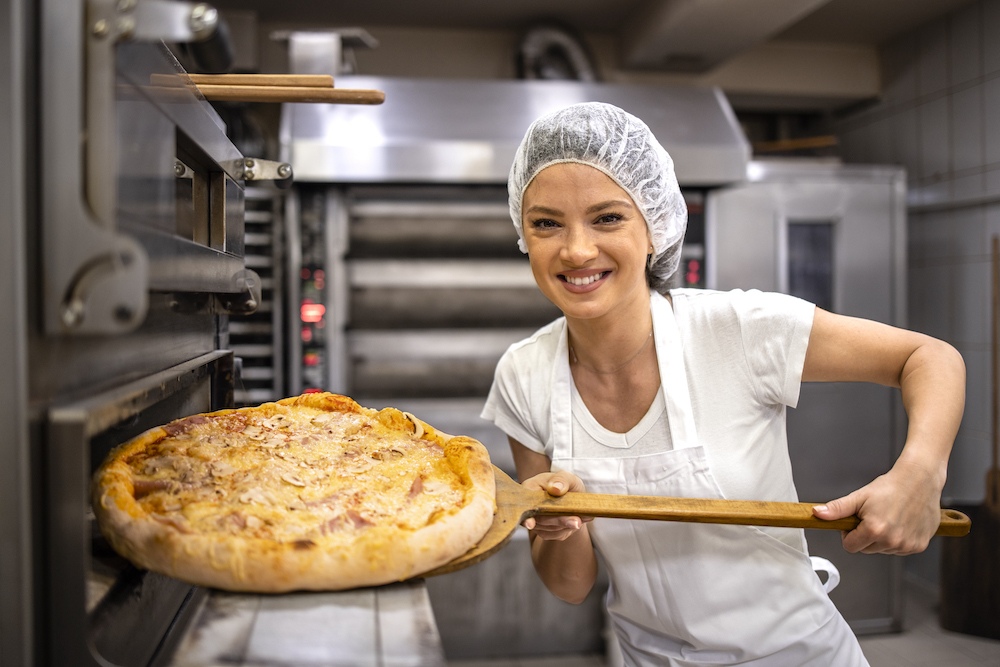For many independent pizzeria owners, coupons and discounts are anathema, resulting in one-time customers just looking for a good deal. But new research from marketing solutions company Vericast suggests these special offers might be a necessity as inflation continues to take its toll on the restaurant industry.
The key is to use discounting wisely as part of an active and robust loyalty rewards program and to engage customers with ordering apps they’ll actually use.
Vericast’s 2023 Restaurant Trend Watch report, titled “Restaurant Pulse Check: How Dining Out Is Trending Among Consumers,” found that nearly half are eating out less often due to inflation. In addition, 18% of consumers, especially millennials, millennial parents, and parents overall, are choosing less expensive brands of pizza or restaurants, Vericast says. The situation is worse with frequent pizza restaurant consumers—those that order from restaurants once a week or more—with 25% selecting less expensive pizza options.
Related: Experts sound off on creating a pizzeria loyalty program
Meanwhile, frozen pizza for home dining is on the upswing. Over the past two years, Vericast reports, retailers have increased their frozen pizza brand promotions 214%, and consumers have noticed. In a typical week, 43% of recent pizzeria guests purchased frozen pizza, and frozen pizza sales have grown by nearly 11% over the last year.
Sixty-nine percent of pizza lovers said higher prices are simply making it too expensive to dine out. Meanwhile, those that are still ordering pizza from restaurants feel no strong loyalty to any particular brand or independent restaurant, with 40% saying they have no preference when choosing a pizza place. And 13% say they’re opting for frozen or non-restaurant pizza.
“Based on sales and traffic numbers, some believe the big four pizza brands (Dominos, Pizza Hut, Papa John’s and Little Caesars) are consumers’ first pick, but when we dig a little deeper, we found that the top choice is actually ‘no preference,’” said Dana Baggett, client strategy director, restaurant division, at Vericast.
But that could spell good news for independent operators and smaller chains. “This lack of preference and loyalty means consumers can be swayed to change brands with incentives,” Baggett added.
Overall, 64% of consumers surveyed said rising prices are making restaurant dining too expensive. However, 41% of those surveyed noted that it’s not necessarily cheaper to eat at home, either, thanks to rising food prices at grocery stores.
How do you lure these price-sensitive customers to your restaurant? Coupons and discounts—love ‘em or hate ‘em—could help. Fifty-three percent of the survey’s respondents said coupons and discounts entice them to try a new restaurant, and 50% said these special offers help them choose between different restaurants. But just 33% said coupons and discounts make them more loyal to a restaurant.
Related: Two pizza chains share their loyalty program secrets
Another interesting point from the Vericast survey: 24% said they won’t eat/order from a restaurant without a coupon or discount.
To stay competitive in 2023, restaurants need to up their loyalty marketing game. Loyalty programs that reward members with savings on their orders are as important as ever. In fact, 57% of frequent casual diners surveyed by Vericast said that if a restaurant doesn’t reward their loyalty with coupons and discounts, they’ll switch to one that does, and 66% percent of fine diners agreed.
“Restaurants that motivate guests to engage with their apps by offering loyalty rewards gain a significant competitive advantage,” the Vericast report notes. Those that don’t will lose space on customers’ phones, with 57% of frequent casual diners saying they often delete their restaurant apps.
Related: Direct mail meets digital in the new pizzeria marketing paradigm
Fifty-eight percent of frequent pizza consumers said that, in the past 30 days, a coupon or discount changed where they decided to dine or order. But, as savvy restaurateurs know by now, a scattershot approach to couponing doesn’t work over the long term. Now is the time to use an “omnichannel” combination of direct mail, email and social media to get your offers in front of potential customers and, most importantly, to sign them up for your loyalty program. Once they’ve signed up, keep these customers engaged with solid and timely offers just for them.
“By using an omnichannel marketing strategy, restaurants can influence consumer behavior and price perception,” the Vericast report concludes. “By providing a consistent message and experience across multiple touchpoints—in their homes, mailboxes, email, social media, TV, and on their devices—restaurants can overcome consumer inertia and drive engagement. Consistent omnichannel messaging instills the level of trust and loyalty consumers need to feel comfortable and confident to engage with a business, even if it requires leaving their home.”













